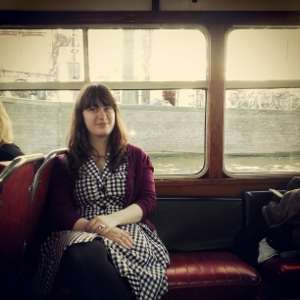The Robeco Summer Concerts at the Concertgebouw in Amsterdam have for years now allowed lovers of classical music to still enjoy live music in the middle of summer when most orchestras are travelling or on a break. This year’s line-up is as impressive as ever, with many international orchestras gracing Amsterdam with their presence. This evening’s orchestra was the Orchestre Philharmonique du Luxembourg, conducted by Emmanuel Krivine, with Nikolai Lugansky performing the piano solo. The evening opened with Maurice Ravel’s Alborado del graciososo, originally the fourth part of piano suite Miroirs. In 1918 Ravel orchestrated this movement, and the result is very impressive and recognizably Ravel. The Spanish-influenced rhythms and themes and enthusiastic percussion make this an upbeat and pleasant beginning of the evening.
Sergei Prokofiev’s Piano Concerto No.2 has a fascinating history. Originally written and performed in 1913, it was slammed at its premiere and subsequently the score was lost. In 1924 Prokofiev rewrote the concerto, based on sketches he still had and made some considerable revisions. It is a four movement piece, starting off with the subtle beginnings of the Andantino. It is quiet and lyrical, both in the piano and the woodwinds. Soon, the piano plays a cadenza that lasts almost five minutes, a tour-de-force that Nikolai Lugansky played with incredible passion and visible pleasure. The orchestra returns with the tuba, horns, trombones and trumpets blazing loudly.
The second movement is a Scherzo, and an incredibly short one at that. It spans just over three minutes and requires the pianist to play ridiculously fast for the entirety of the movement. Looking at Lugansky´s hands, it is difficult to fathom how he can play that many notes yet still create discernable and delicate melodies. The third movement, Intermezzo – Allegro moderato, is the most exciting one, opening with music not dissimilar from Prokofiev’s own famous Dance of the Knights, it is very rhythmic and there were many heads and feet bopping along to the music. The jarred rhythms of the piano combine beautifully with the darker music of this movement, creating an almost creepy fairytale-like effect. The last movement, Finale – Allegro tempestoso, gave Lugansky plenty of opportunity to bang on the piano in his typical fashion, while still being able to emphasize the beautiful nuances of the piece and melodies and certain notes that the listener can hang onto. The big chords in the piano and orchestra made for an enjoyable bombastic ending, preceded by a few misleading, deceptive almost-endings. All in all Prokofiev’s Piano Concerto No.2 is one of his most exciting and impressive works, demanding the pianist to play seemingly impossible notes. Lugansky passed the test with flying colours, and seemed to have lots of fun while doing it.
The transition to Antonín Dvořák’s Symphony No.9 was an easy one. Like the Ravel and Prokofiev, it is abound with melodies and bombastic rhythms. An incredibly well-known work, it is one of those rare pieces that never becomes boring, no matter how many times you listen to it. It was written in 1893 and inspired by Dvořák’s visit to New York, hence the subtitle “From the New World”. One of the main things that will always amaze me about this symphony is that it has such an impressive amount of different, and all equally beautiful and emotionally-charged melodies. The first movement opens with subdued strings only to be lead into a loud climax with the brass blazing out the first main melody that will return throughout the piece. Highlight of the symphony was the last movement, containing one of the most stunning themes in all of Dvořák’s works. The Orchestre Philharmonique de Luxembourg, under the baton of Emmanuel Krivine, played a little fast at times, but never too fast. This evening was one of those concerts where you can see the musicians, conductor and soloist enjoy the music just as much as the listeners do, which is always a wonderful experience.


